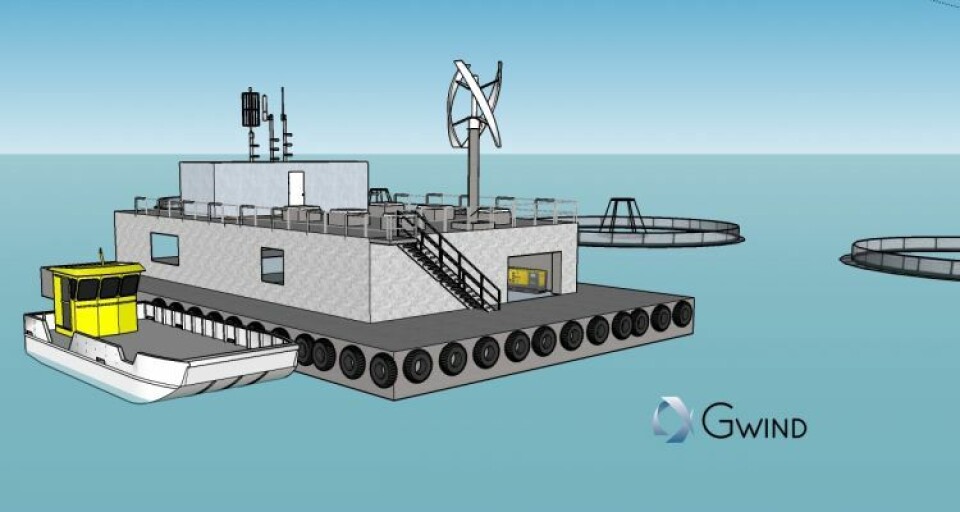
The great green feed barge scheme
A Stavanger-based renewables company is seeking to develop and deploy hybrid energy systems for powering feed barges.
Called Gwind, the company is a spin-out from the University of Stavanger. After developing floating wind turbine solutions in recent years they are now targeting innovative power supply solutions for aquaculture.

As Jean-Baptiste Curien from Gwind explains to Kyst.no: “We believe that the combination of wind turbines and batteries on barges can be very profitable for the farmer, while cutting greenhouse gas emissions.”
Curien points out that around half of the marine sites in Norway are currently powers by diesel generators rather than power supplied from onshore sources.
“We want to install small wind turbines, which have shown great success through testing the last two years, on the barges, which can be backed up by battery packs which store energy from both wind and diesel generators. Also solar panels can be included, to create a greener, hybrid energy solution,” he explains.
Less noise and lower costs
Over the course of the last year, the company has worked to uncover the aquaculture industry’s energy needs.
“We now have several studies underway with producers and hope for further additional studies, as we need to have a close dialogue with the industry to understand their power requirements. We don’t currently plan to remove the diesel generators, but aim to reduce and optimize the use of them,” he adds.
At night, the battery pack and the windmill take over from the diesel unit to reduce noise and fuel consumption. During the day the battery pack can support the diesel unit, if necessary, to optimize power production.
“The small windmills have a capacity of between 3 and 5 kW on average, and up to 10 kW max. These can provide the power when it is windy, so we estimate that 5-10 per cent of the power can come from the turbines. It's green energy, which is very cost-effective – around 10-30% cheaper than diesel generator power,” he explains.
“It’s a ‘low hanging fruit’ for fish farmers and it has great potential for further development of green energy in the future,” Curien concludes.






















































